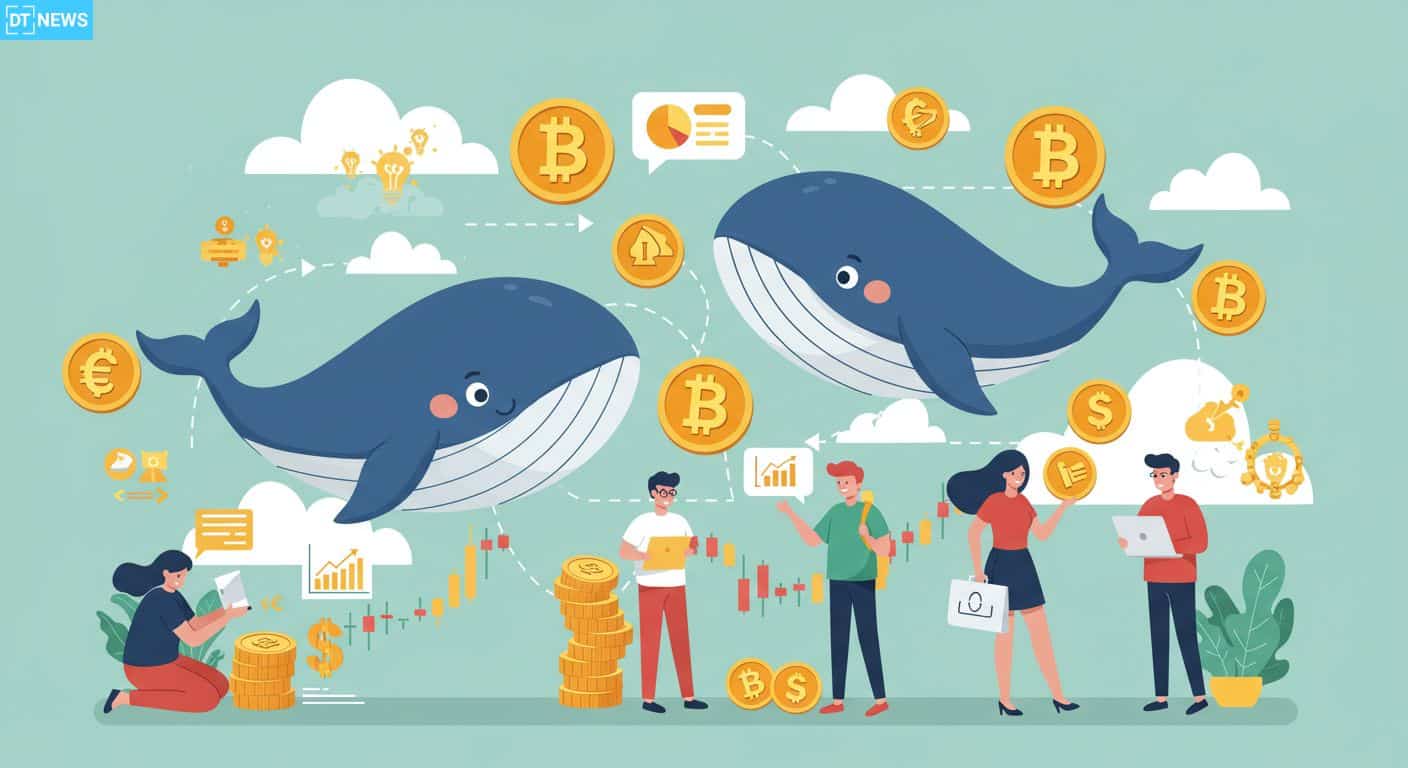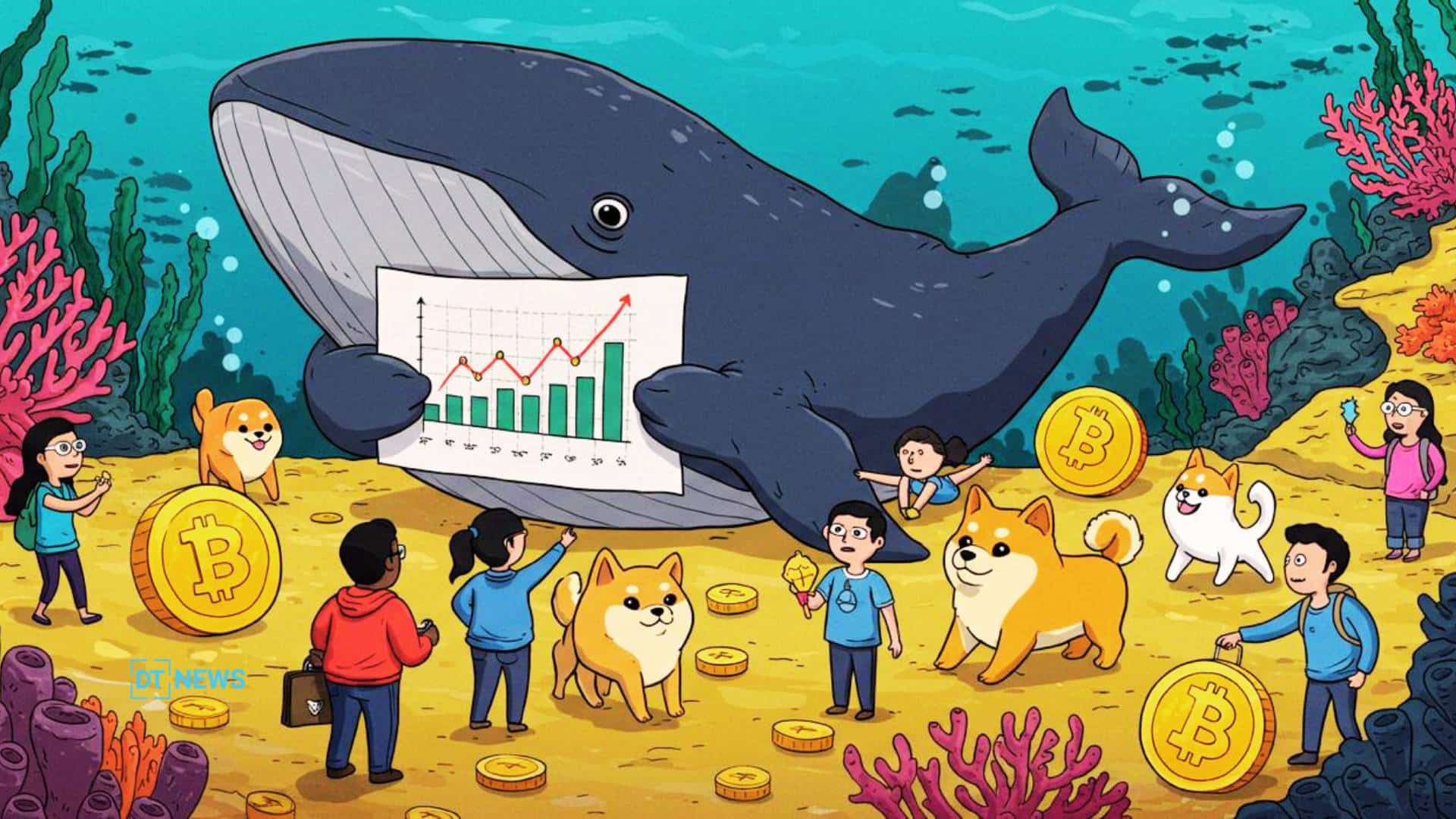Cryptocurrency markets, especially altcoins, are wild. A constant debate is whales vs retail, do big investors or everyday traders really control the next price move? In practice, both do.
Entities holding large coin volumes known as whales can shock the market with big buys or sells, while retail traders, that is, small, individual investors, often amplify trends through herd behavior.
Observing on-chain data, who really calls the shots in altcoins?
Whales vs Retail: Market Power Dynamics
On-chain analytics show a huge concentration of supply among a tiny percentage of wallets. A 2025 study found about 0.3% of Ethereum addresses hold about 95% of all $ETH; indicating that whale wallets control almost the entire token supply. The other 99.7% of addresses hold about 5% of $ETH.
Here’s the table to illustrate, using $ETH as a representative altcoin:
| Holder Group | % of ETH Supply (approx.) |
| Top 0.3% wallets (whales) | 95% |
| Remaining wallets (retail, etc.) | 5% |
Industry analysts say whale moves set the stage for market swings. Nansen reports when whales buy in size, it can spark FOMO-driven rallies, when whales sell in size, it can trigger panic and sharp price drops. In thinly-traded altcoins, especially, a single whale trade can be a price discovery event.

In short; whale accumulation reduces circulating supply and pushes prices up; while whale selling floods supply and pushes prices down.
Several whale tactics reveal that whales have way more resources and information than retail traders. As some sources note, whales’ advantages such as capital, tech, insider channels; let them move prices in ways retail traders can’t.
Overall, not all whale activity is malicious but their ability to move big volume gives them huge leverage over altcoin prices and liquidity in the short term.
Also read: Top Crypto Whales Resurface: Massive BTC and ETH Transfers Spark Bull vs. Bear Debate
Retail Traders: FOMO, Hype, and Herd Behavior
Retail investors (often called “minnows” when compared to whales) move markets too but in a different way. Each retail trader has only a tiny fraction of the supply but collectively they can move big volume. Retail traders often base decisions on news, technicals or social media.
This crowd psychology can fuel big rallies in altcoins. Sources note that social media buzz often precedes altcoin rallies as retail investors chase gains. Prices rise and FOMO kicks in, more retail jump in and prices rise further. Memecoins like DOGE, PEPE or others are classic retail driven pumps often surging hundreds of percent on viral hype.
Notably a Federal Reserve study of Ethereum markets found that small retail wallets drive volatility. The researchers found that small holders sold before a price rise and whales accumulated. As a result they concluded:
“the volatility of $ETH returns seems to be driven by small retail investors rather than by the crypto whales“.
This means retail trading is responsible for most of the wild price swings. When retail traders panic or buy exuberantly, prices can swing big even if whales hold steady.
Retail can also herd into or out of altcoins en masse. During “altcoin season” retail investors flood into new tokens expecting big gains which itself moves the price. However retail investors don’t have whales’ deep insight or capital reserves.
Simply, retail traders amplify market moves; boosts volatility and momentum, but often get in late in the cycle and take on more risk.
Interpreting Whale vs Retail Signals
When all of these are put together, whales start big moves but retail traders amplify and execute them. Experts note, whales accumulation often sparks FOMO and rallies, while large sell-offs can trigger panic. OKX research also says when whales load up tokens, retail investors follow:
“as whales accumulate tokens, retail investors may follow, driving demand and potentially prices”.
In other words, whale accumulation signals confidence which invites retail buying; whale selling signals risk which can cause retail panic.
But neither has total control. Whales can set up the move by moving supply into one side of the market, but without retail participation, there’s no volume to push prices.
Retail on the other hand needs lead indicators. Experienced traders use on-chain data and order books to track whales. Platforms like Nansen or Whale Alert show large transfers, giving clues of whale intent. By combining these signals with market context, traders try to anticipate altcoin moves.

In a balanced outlook, whales lay the groundwork, retail fills the sails. Both are needed to move altcoins. Whales’ sheer capital and strategic moves can cause sudden trends, but retail crowd psychology and trading volume gives those trends momentum.
Also read: Altcoin Season 2025? Traders Say the Cup and Handle Is the Clearest Signal Yet
Conclusion
Based on the latest research, “whales vs retail” in altcoin markets is not a one-sided contest. Whales often set the table by moving large amounts of coins, driving initial price moves through their buying or selling power. Retail traders then fuel the motion by buying or selling based on social sentiment and momentum.
Whales profit when they sync with or anticipate retail sentiment, while retail traders experience most of the volatility. Neither guarantees a price outcome as markets can flip. Trends can reverse suddenly and both whales and retail can get blindsided by bigger economic or regulatory changes.
Basically, altcoin moves are a team effort: whales set the trend, but retail fuels and peaks it. Market data and research shows both actors influence prices. For traders, that means watching both big on-chain flows (whales) and retail sentiment.
For in-depth analysis and the latest trends in the crypto space, our platform offers expert content regularly.
Summary
Big crypto holders (whales) hold most of the altcoins and can move the market with a single buy or sell. Small individual traders (retail) drive the volatility and momentum through FOMO; and herd behavior. Recent research and data shows whales set up altcoin moves and retail amplifies and sustains them.
Glossary
Altcoin: Any crypto other than Bitcoin (e.g.; Ethereum, Solana, Dogecoin).
Crypto Whale: A big holder (individual or entity) of a crypto.
Retail Investor: An individual (non-institutional) investor who buys or sells smaller amounts of crypto.
FOMO (Fear of Missing Out): A trader term for when people buy into an asset because its price is going up; or they think they’ll miss out on profits.
Volatility: A measure of how much an asset moves up and down over time.
Frequently Asked Questions About Whales vs Retail
How do whales affect altcoin prices?
Whales can pump prices by buying huge amounts so supply is scarce or crash prices by dumping large holdings. Whale transactions create ripples; big buys spark rallies often via FOMO, big sells trigger panic selling in retail.
Can retail investors move altcoin markets?
Yes. Retail traders, although they have much smaller holdings individually, collectively generate a lot of volume.
What tactics do whales use in crypto?
Whales use spoofing (placing big orders to mislead others); wash trading (buying/selling with oneself to inflate volume); pump-and-dump (publicly hype a coin then sell off); and massive buy or sell orders that create flash rallies or crashes. These methods leverage their huge capital and can trap unsuspecting retail traders.



















































































































